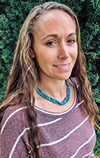We’re fully into grazing season as well as peak forage growing season, which typically begins in April or May, ending with July or August. While many cattle producers have seasons of experience telling them how many cattle a tract of land can hold during the grazing months, it could still prove to be of benefit to have a reminder of how to determine how many animals the land can support, i.e., determine a proper stocking rate.
To do this, one needs to figure out what the forage yield is and what the animal is going to consume based on its nutrient needs. To get an accurate forage yield amount, keep in mind how an implemented stocking rate affects rangeland and pasture health and productivity, livestock production and, ultimately, economic returns.
Also important is knowing the difference between stocking rate and carrying capacity. Stocking rate is the set number of animals on a tract of land for a designated period, a practice influenced and determined by those managing the livestock. Carrying capacity, or grazing capacity, on the other hand is the number of animals a tract of land can support on a long-term basis without causing damage, determined by Mother Nature through the environmental climate.
Determining proper stocking rate can be accomplished with a few basic steps, starting with determining the forage yield of a parcel of land. Estimating total forage availability starts with mapping the land tract into segments that are about equally productive. Once done, surveying the land’s productivity can be done by taking clippings, referring to picture guides for visual estimation or referring to site guides produced by the Natural Resources Conservation Service.
The cattle producer’s primary focus is the cattle, but a close second should be the land that sustains the cattle and keeping it healthy and flourishing, which can be accomplished by setting a proper stocking rate or carrying capacity. Proper rates should result in lessened soil erosion, decreased invasion of noxious weeds and less desirable forages, and potentially even provide improvement to degraded tracts of land. Inaccurate stocking rates or carrying capacities may result in lower individual animal performance such as weaning weights and conception rates. Another issue that may be encountered with overgrazing is less quality forage being available for the animal, decreasing its ability to meet its nutrient requirements and causing it to actually require more as it will expend more energy searching out preferred forages. When keeping finances in mind, most stocking rate studies reveal that the economically optimal stocking rate is moderate, not heavy.








